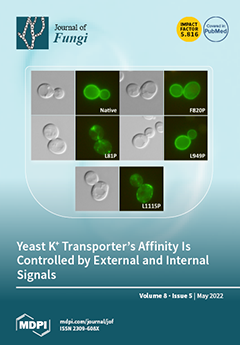Tropospheric ozone and nitrogen deposition are two major environmental pollutants. A great deal of research has focused on the negative impacts of elevated O
3 and the complementary effect of soil N addition on the physiological properties of trees. However, it has been overlooked how elevated O
3 and N addition affect tree immunity in face of pathogen infection, as well as of the important roles of phyllosphere microbiome community in host–pathogen–environment interplay. Here, we examined the effects of elevated O
3 and soil N addition on poplar leaf rust [
Melampsora larici-populina] severity of two susceptible hybrid poplars [clone ‘107’:
Populus euramericana cv. ‘74/76’; clone ‘546’:
P. deltoides Í
P. cathayana] in Free-Air-Controlled-Environment plots, in addition, the link between
Mlp-susceptibility and changes in microbial community was determined using Miseq amplicon sequencing. Rust severity of clone ‘107’ significantly increased under elevated O
3 or N addition only; however, the negative impact of elevated O
3 could be significantly mitigated when accompanied by N addition, likewise, this trade-off was reflected in its phyllosphere microbial α-diversity responding to elevated O
3 and N addition. However, rust severity of clone ‘546’ did not differ significantly in the cases of elevated O
3 and N addition.
Mlp infection altered microbial community composition and increased its sensitivity to elevated O
3, as determined by the markedly different abundance of taxa. Elevated O
3 and N addition reduced the complexity of microbial community, which may explain the increased severity of poplar rust. These findings suggest that poplars require a changing phyllosphere microbial associations to optimize plant immunity in response to environmental changes.
Full article






